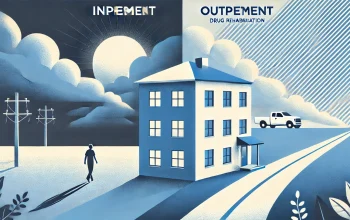Choosing the Right Drug Rehab Program: Expert Tips for Success

Deciding to seek help for Drug Rehab Program addiction is a significant and often challenging step for individuals and their families. The path to recovery can be complex, especially when it comes to choosing the right drug rehabilitation program. With various treatment options available, it’s crucial to find a program that aligns with the specific needs and circumstances of the individual. This article will provide a comprehensive guide on how to choose the right drug rehabilitation program for you or a loved one, covering essential factors to consider, types of Drug Rehab Program available, and how to access resources for support.
Table of Contents
Understanding Drug Rehabilitation
Before diving into the selection process, it’s essential to understand what Drug Rehab Program entails. Drug rehab is a structured program designed to help individuals overcome addiction to drugs or alcohol. Rehabilitation typically includes:
- Detoxification: A medically supervised process that helps individuals safely withdraw from substances.
- Therapy and Counseling: Psychological support aimed at addressing the emotional and mental aspects of addiction.
- Aftercare: Ongoing support following the completion of a rehab program to help maintain sobriety.
The goal of Drug Rehab Program is to help individuals achieve and sustain recovery while addressing the underlying issues related to their substance use.
Factors to Consider When Choosing a Drug Rehabilitation Program
Choosing the right Drug Rehab Program requires careful consideration of several factors. Here are some key aspects to evaluate:
1. Type of Treatment Program
Drug Rehab Program can be broadly categorized into inpatient and outpatient treatment. Understanding the differences can help you determine which type is suitable:
- Inpatient Rehabilitation: This program requires individuals to reside at a treatment facility for the duration of their treatment. It offers a structured environment with 24/7 medical supervision, making it ideal for those with severe addictions or co-occurring mental health disorders.
- Outpatient Rehabilitation: This program allows individuals to attend therapy sessions while living at home. It offers more flexibility and is typically recommended for those with mild to moderate addictions who have a stable home environment and support system.
2. Severity of Addiction
The severity of the addiction plays a crucial role in selecting the right program. Individuals with more severe addictions may benefit from the intensive support offered in an inpatient setting, while those with milder issues may find outpatient programs sufficient. Assess the individual’s history with substance use, previous attempts at recovery, and any underlying mental health conditions to determine the appropriate level of care.
3. Treatment Approaches
Different rehabilitation programs utilize various treatment approaches and methodologies. It’s essential to research and choose a program that employs evidence-based practices, such as:
- Cognitive Behavioral Therapy (CBT): This therapy helps individuals identify and change negative thought patterns that contribute to substance use.
- Motivational Interviewing (MI): This client-centered counseling approach aims to enhance an individual’s motivation to change.
- Dialectical Behavior Therapy (DBT): This therapy focuses on emotional regulation, mindfulness, and interpersonal effectiveness.
Ensure that the program’s therapeutic modalities resonate with the individual’s needs and preferences.
4. Duration of the Program
The length of treatment can vary significantly among rehabilitation programs. Common durations include:
- Short-Term Programs: Typically last 28 to 30 days. These programs may focus on detoxification and initial recovery.
- Long-Term Programs: Usually last 60 to 90 days or more. Long-term programs allow for more comprehensive treatment, addressing underlying issues and building coping skills.
Consider the individual’s schedule, personal commitments, and the severity of their addiction when determining the ideal Drug Rehab Program length.
5. Facility Accreditation and Staff Qualifications
Verify the accreditation of the rehabilitation facility to ensure it meets established standards of care. Accredited programs are typically more reliable and adhere to guidelines set by organizations such as the Joint Commission or the National Association of Addiction Treatment Providers (NAATP).
Additionally, evaluate the qualifications of the staff, including:
- Licensed counselors and therapists
- Medical professionals with experience in addiction treatment
- Support staff trained in addiction recovery
The expertise of the staff can significantly impact the effectiveness of the treatment.
6. Location and Environment
The location of the Drug Rehab Program can influence the individual’s recovery experience. Some people prefer local programs for convenience, while others may benefit from getting away from their usual environment, reducing triggers and distractions. Consider the following:
- Urban vs. Rural Settings: Urban facilities may offer more resources, while rural settings may provide a quieter, more secluded environment conducive to healing.
- Facility Amenities: Assess the amenities offered, such as comfortable accommodations, recreational activities, and therapeutic options like yoga or art therapy.
7. Cost and Insurance Coverage
The cost of drug rehabilitation can vary widely based on the type of program, duration, and facility amenities. It’s crucial to evaluate your budget and determine what you can afford. Check with the rehabilitation center to understand their pricing structure and whether they accept insurance.
Many insurance plans cover a portion of addiction treatment, so it’s essential to contact your provider for details about coverage. Facilities may also offer sliding scale fees or financial assistance programs for individuals without insurance.
8. Support Services
Ongoing support is crucial for maintaining sobriety after completing a Drug Rehab Program. Look for facilities that offer aftercare services, such as:
- Alumni programs: Opportunities for former patients to connect and support each other.
- Sober living arrangements: Transitional housing options for individuals in recovery.
- Continued therapy: Access to outpatient therapy or counseling sessions after completing the initial program.
These support services can play a vital role in long-term recovery.
Steps to Finding the Right Drug Rehabilitation Program
Now that you understand the key factors to consider, here’s a step-by-step guide to help you find the right drug rehabilitation program:
1. Assess Your Needs
Start by assessing the individual’s needs, preferences, and circumstances. Consider the severity of the addiction, any co-occurring mental health issues, and the level of support required. Involve the individual in this process if possible, as their input can be invaluable.
2. Research Options
Conduct thorough research on available drug rehabilitation programs. Use online resources, directories, and support groups to compile a list of potential facilities. Websites like the Substance Abuse and Mental Health Services Administration (SAMHSA) offer searchable databases of treatment providers.
3. Verify Credentials
Once you have a list of potential programs, verify their credentials and accreditation. Check their licensing status, reviews from previous patients, and the qualifications of the staff. Reach out to former patients or their families if possible to gain insight into their experiences.
4. Schedule Consultations
Contact the programs you are interested in to schedule consultations or tours. Many facilities offer free consultations to discuss treatment options and answer any questions. This is an excellent opportunity to assess the facility’s atmosphere, staff professionalism, and overall environment.
5. Discuss Financial Options
During consultations, inquire about the cost of treatment and what payment options are available. Discuss insurance coverage, sliding scale fees, or any financial assistance programs offered. Understanding the financial aspects can help you make an informed decision.
6. Make a Decision
After gathering all the necessary information, it’s time to make a decision. Choose a program that aligns with the individual’s needs, preferences, and circumstances. Ensure that the selected program has a solid support system in place for ongoing recovery.
7. Prepare for Treatment
Once a program is chosen, help the individual prepare for treatment. Discuss what to expect during the process, provide emotional support, and assist with logistical arrangements such as transportation.
Resources for Support
Throughout the process of selecting a drug rehabilitation program, accessing supportive resources can be invaluable. Here are a few helpful organizations and platforms:
- SAMHSA: The Substance Abuse and Mental Health Services Administration offers a national helpline and treatment locator to help individuals find suitable treatment options.
- National Institute on Drug Abuse (NIDA): NIDA provides a wealth of information on drug addiction, treatment options, and research on effective interventions.
- Al-Anon and Nar-Anon: These support groups provide resources for families and friends of individuals struggling with addiction.
Conclusion
Choosing the right drug rehabilitation program is a crucial step in the journey toward recovery. By considering factors such as treatment type, severity of addiction, program duration, and support services, you can make an informed decision that best meets the needs of you or your loved one. Remember that recovery is a personal journey, and the right program can provide the tools and support necessary for lasting change.
For additional resources and information, be sure to explore trusted websites and organizations dedicated to addiction treatment and recovery. Together, we can foster a supportive environment that encourages healing and growth for those affected by substance use disorders.


